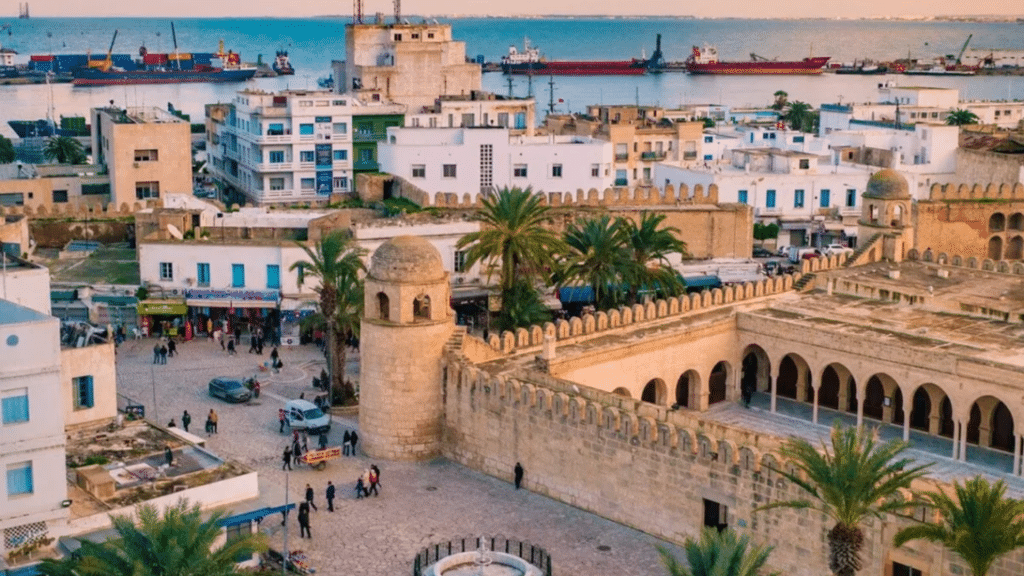Tunisia is a country with layers of history, culture, and everyday life that often go unnoticed at first glance.
From ancient traditions to natural wonders and creative modern touches, each detail adds depth to Tunisia’s identity.
Whether cultural, geographical, or simply unusual, these facts show Tunisia’s charm and complexity in a way that is both informative and enjoyable.
However, this blog covers a list that brings together a range of interesting points, some rooted in the past, others more recent, all offering a fresh perspective in detail.
1. Northernmost Point of Africa
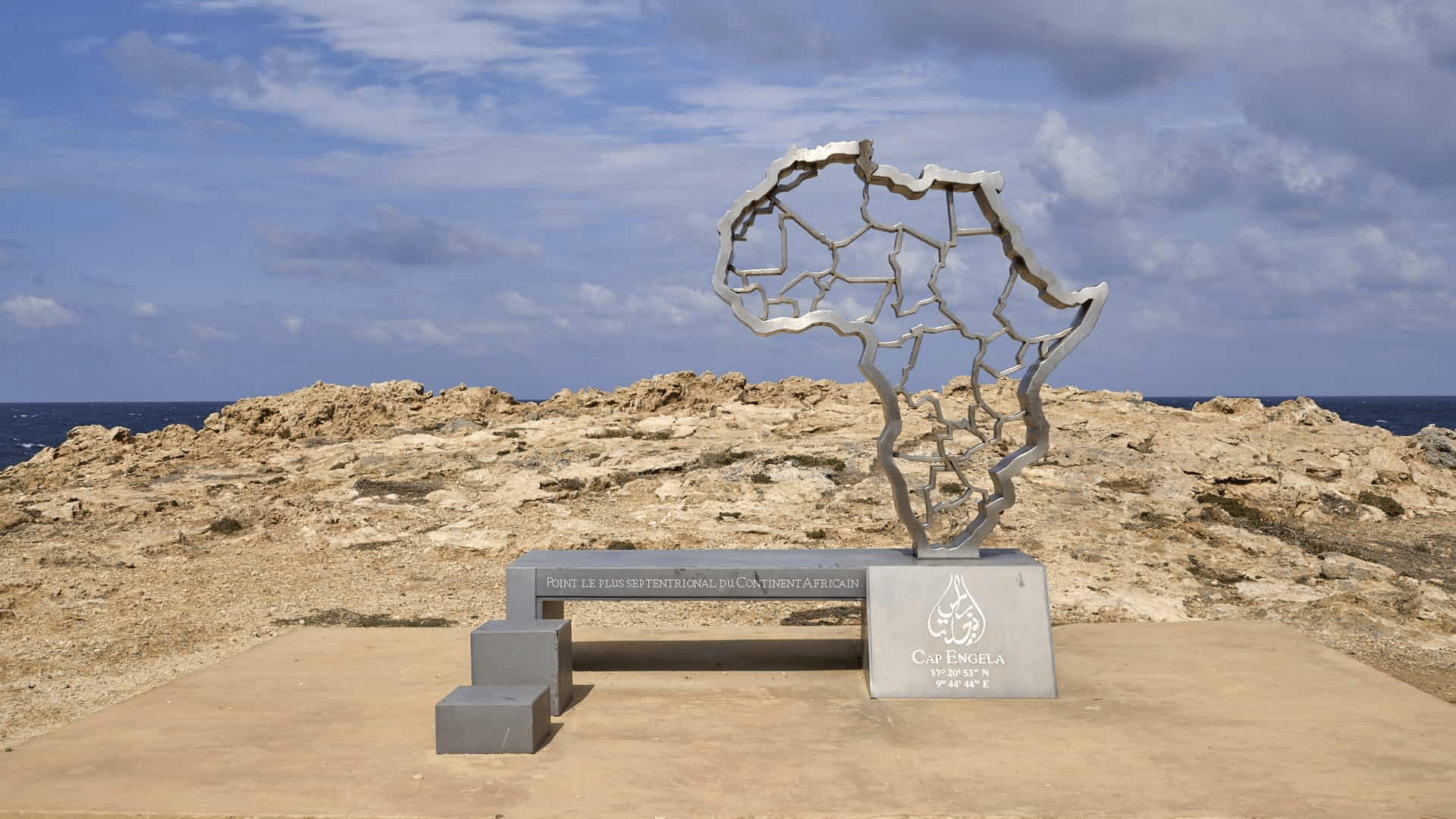
Ras Ben Sakka in Tunisia is the northernmost point of the African continent, just slightly north of Cape Blanc.
Overlooking the Mediterranean Sea, it offers peaceful views and holds geographic importance. Though not widely known, it attracts those interested in continental landmarks.
This quiet coastal spot highlights Tunisia’s location at the top of Africa and its connection to Europe across the sea.
2. Home to The Sahara
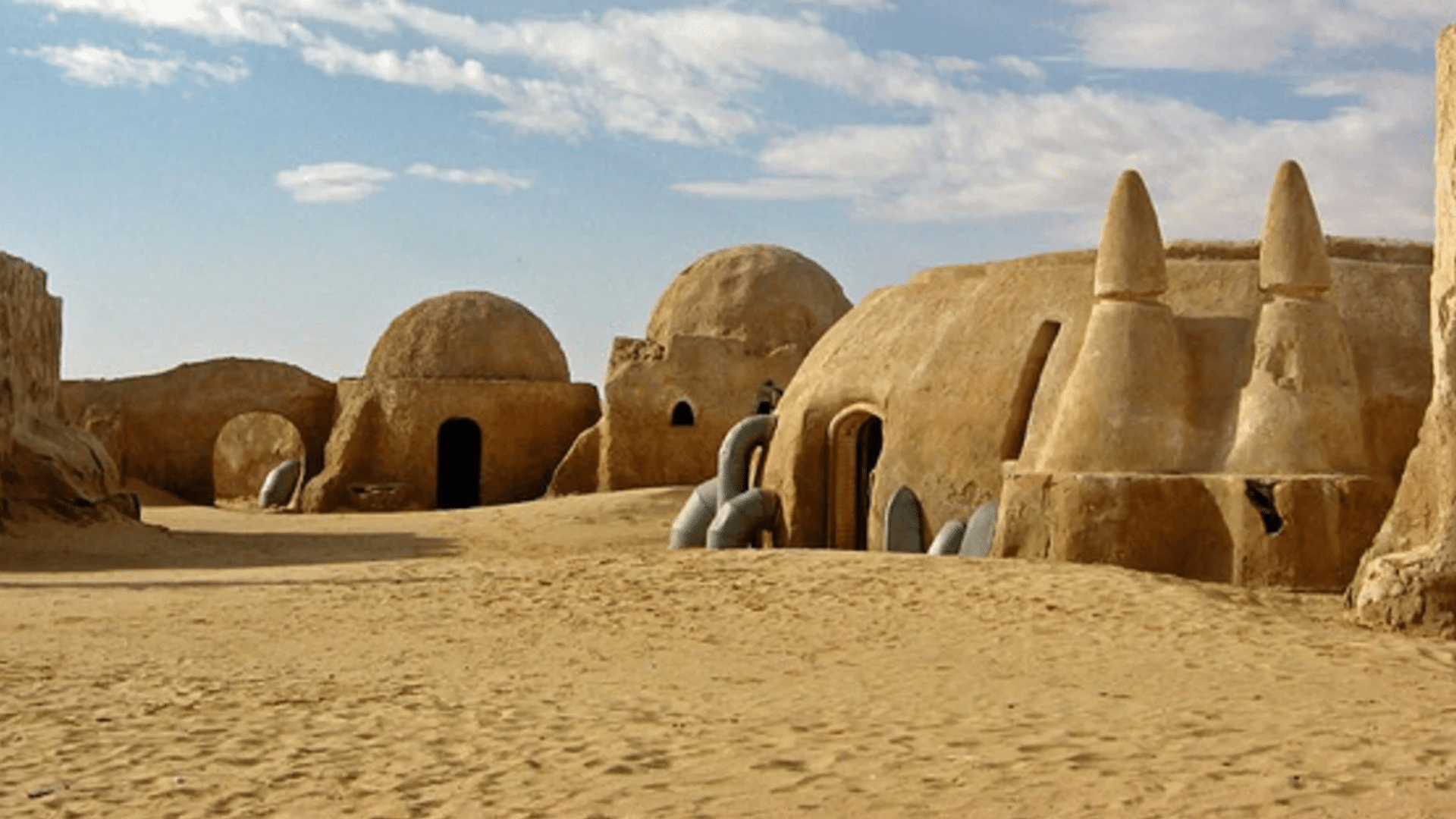
Southern Tunisia reaches into the Sahara, the world’s largest hot desert. The region features golden dunes, wide plateaus, and peaceful desert scenery.
Towns like Douz act as gateways, known for camel rides, festivals, and Berber heritage.
Sahara shapes daily life, weather patterns, and tourism in the region, offering visitors an experience that blends natural beauty with deep cultural traditions
3. Eight UNESCO World Heritage Sites

Tunisia proudly hosts eight UNESCO World Heritage Sites, highlighting its rich history and cultural significance. These include:
- Amphitheatre of El Jem: One of the largest Roman amphitheaters.
- Medina of Tunis: A historic center with palaces, mosques, and souks.
- Kairouan: A spiritual center and early Islamic city.
- Dougga: A well-preserved Roman town.
- Medina of Sousse: A fortified city from the early Islamic period.
- Punic Town of Kerkuane: Remains of a Punic city untouched by Roman influence.
- Medina of Sfax: A historic walled village with cultural importance.
4. The Magnificent El Jem Colosseum
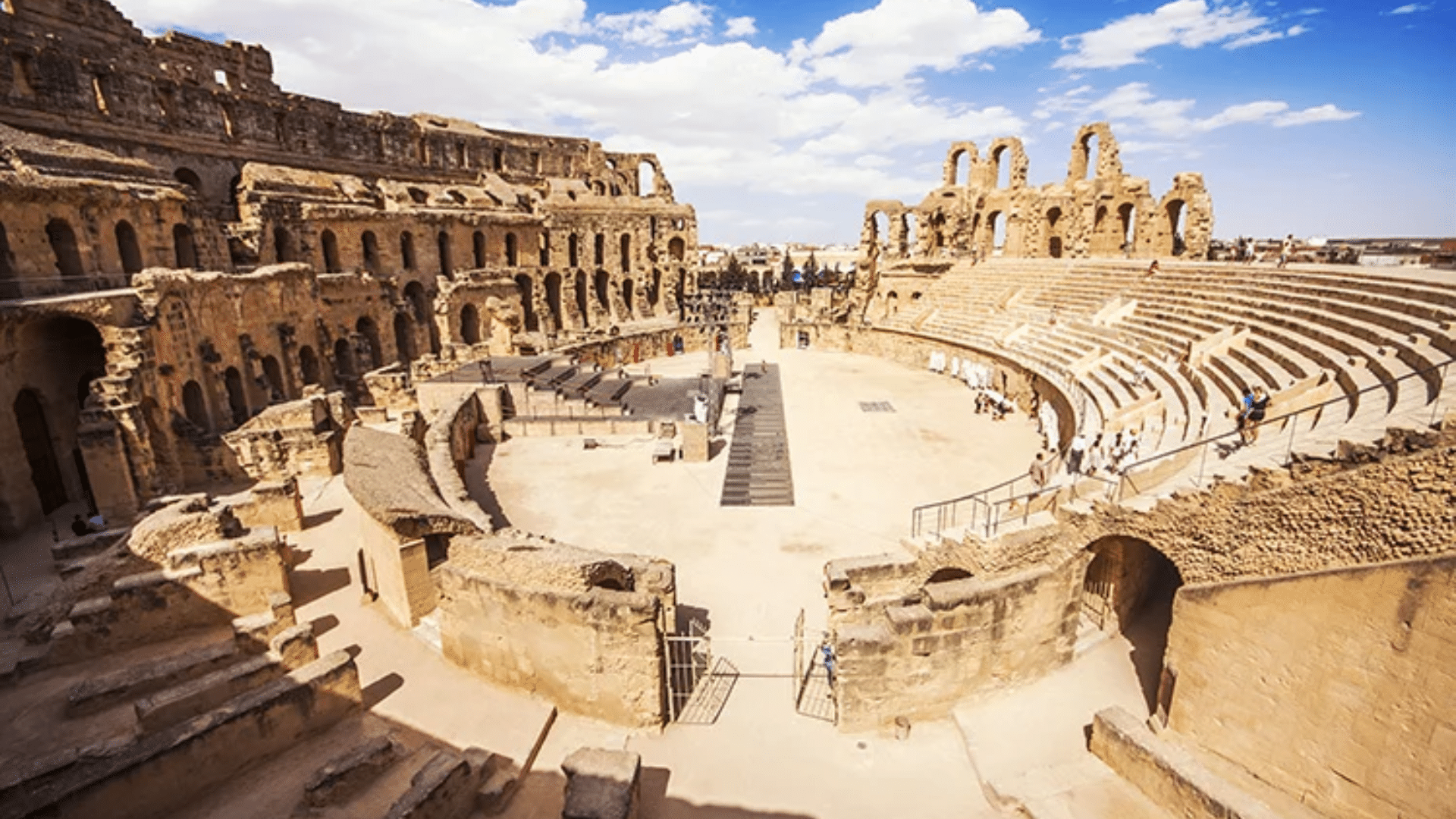
The El Jem Colosseum in Tunisia is one of the largest and best-preserved Roman amphitheaters in the world. Built in the 3rd century AD, it could hold up to 35,000 spectators.
Unlike the Colosseum in Rome, El Jem’s structure remains remarkably intact, making it a prime example of Roman architecture in North Africa.
It has been used for concerts, events, and film sets, offering a clear glimpse into the grandeur of ancient Roman entertainment.
5. Independence from France
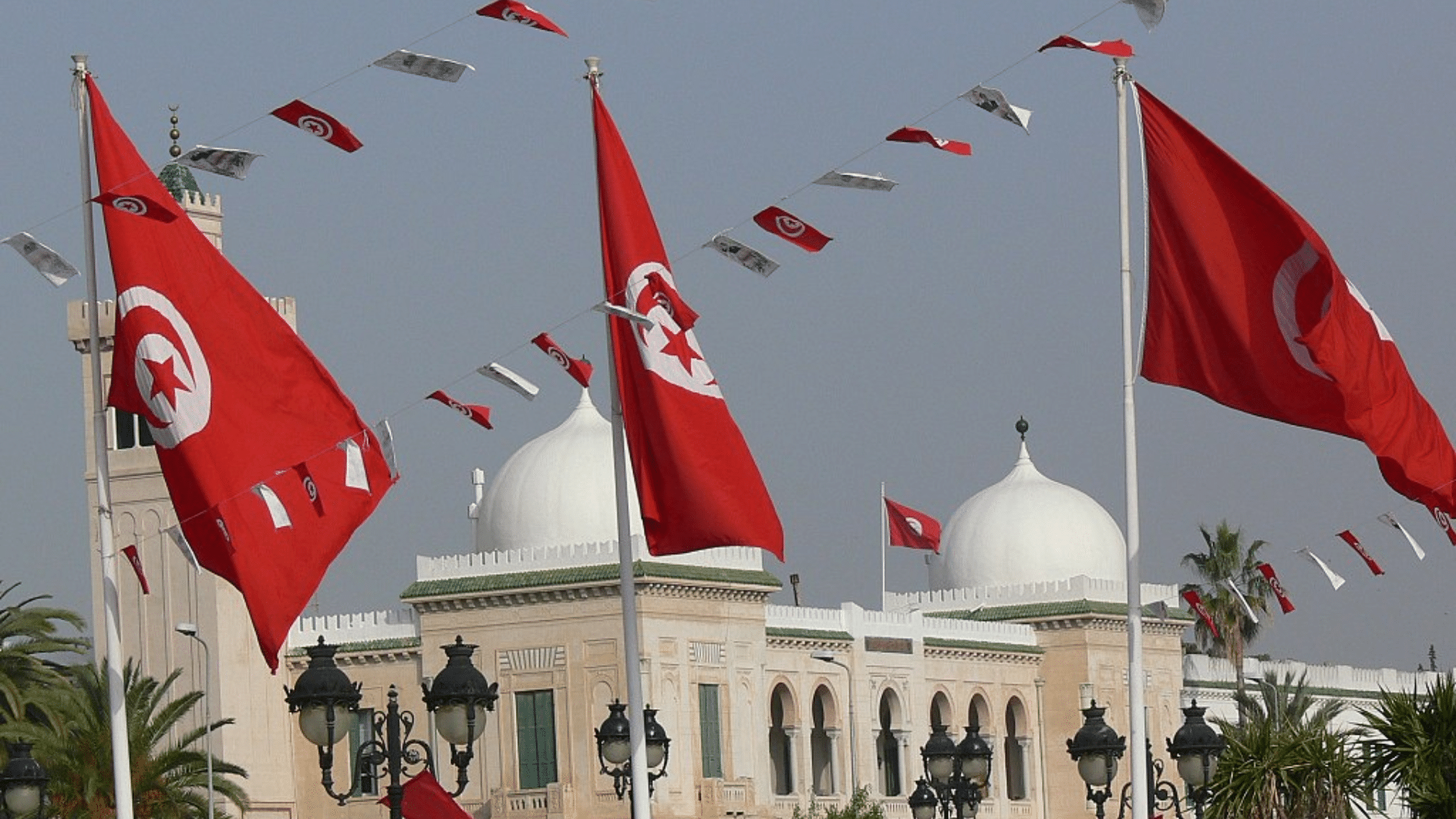
Tunisia’s road to independence was shaped by resistance, reform, and strong leadership over several key turning points.
- 1881: Tunisia becomes a French protectorate.
- 1934: The Neo Destour party was founded.
- 1952–1954: Armed resistance and negotiations.
- March 20, 1956: Tunisia gains independence.
- 1957: Tunisia becomes a republic; Bourguiba becomes president.
6. Ichkeul National Park

Ichkeul National Park is Tunisia’s only natural UNESCO World Heritage Site.
Located in the north, it’s centered around Lake Ichkeul, an important stop for hundreds of thousands of migrating birds, including flamingos, storks, and ducks.
This unique wetland is also home to water buffalo and lush marshland vegetation. The park plays a vital role in global biodiversity and bird conservation.
It offers peaceful hiking paths and birdwatching points, and reminds visitors of nature’s strength in a changing climate.
7. Only Two Presidents
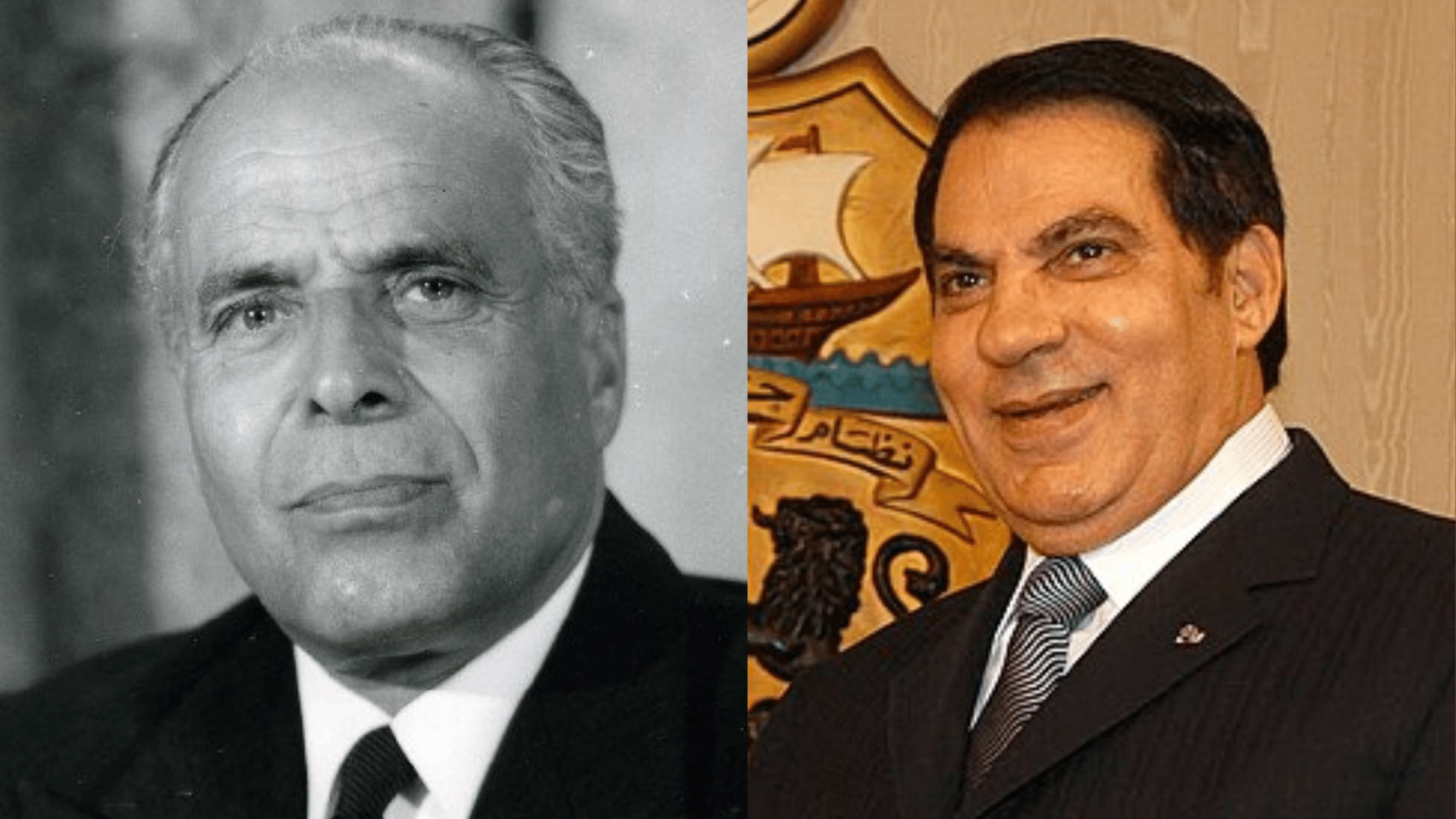
These two figures defined decades of Tunisian politics, reforms, and historical turning points.
Habib Bourguiba (1957–1987)
- Led the country after independence
- Promoted education and women’s rights
Zine El Abidine Ben Ali (1987–2011)
- Took over in a coup
- Removed during the Arab Spring
8. Ancient Carthage

Carthage was once a powerful Phoenician city-state and a major rival of Rome.
It is located near modern-day Tunis, and played a central role in Mediterranean trade and military history, particularly during the Punic Wars.
Founded in the 9th century BC, it was eventually destroyed by Rome in 146 BC and later rebuilt.
9. Roman Hanaya Water System
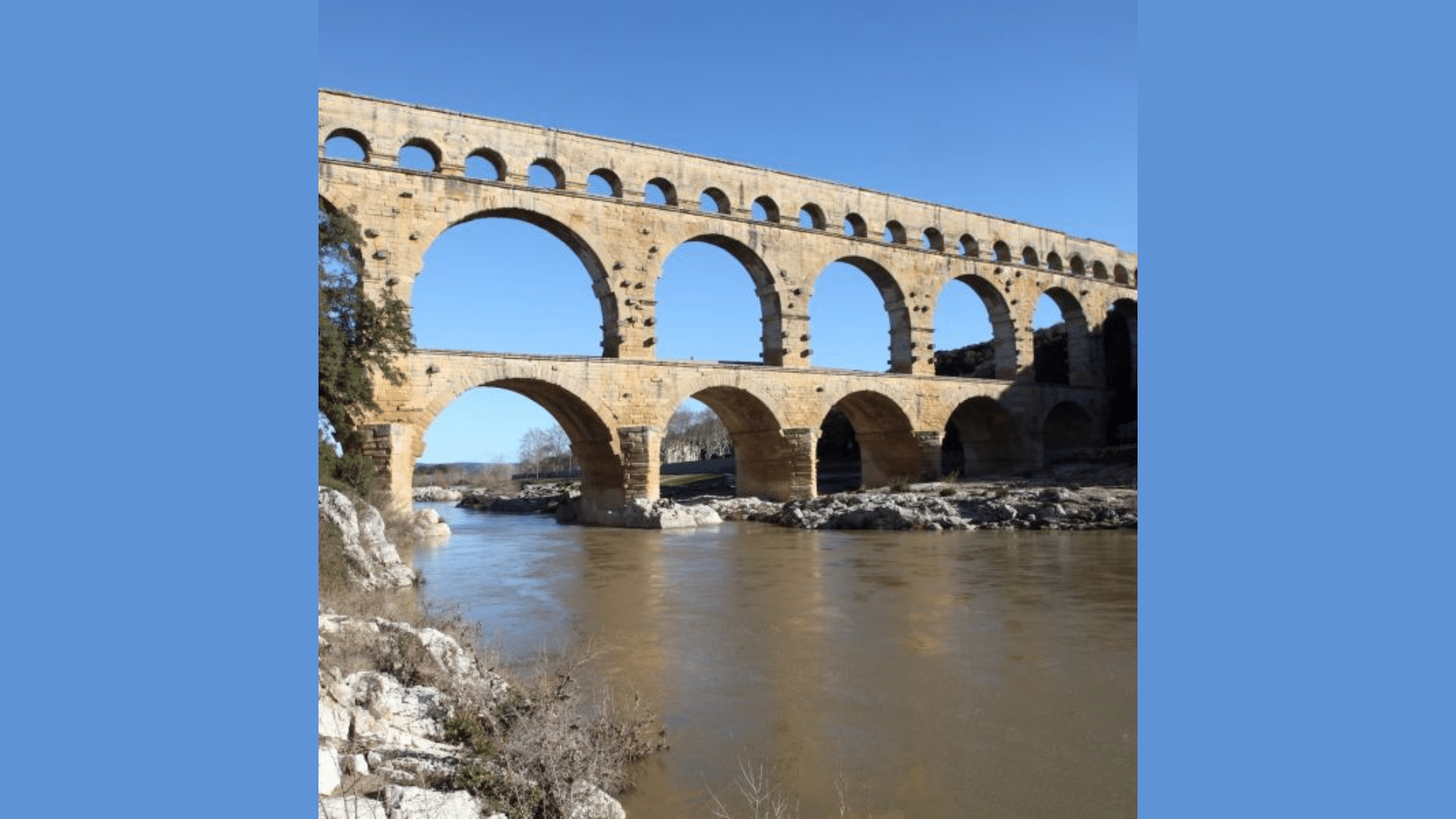
Here’s a quick look at the impressive Roman aqueduct system, which, with its smart engineering, brought fresh water to ancient cities.
| Feature | Details |
|---|---|
| Purpose | Transport fresh water to cities like Carthage |
| Main Aqueduct | Zaghouan Aqueduct (130+ km) |
| Roman Engineering Feat | Gravity-fed system using arches and tunnels |
| Historical Significance | One of the largest ancient water systems in Africa |
10. Kairouan: Fourth Holiest City in Islam
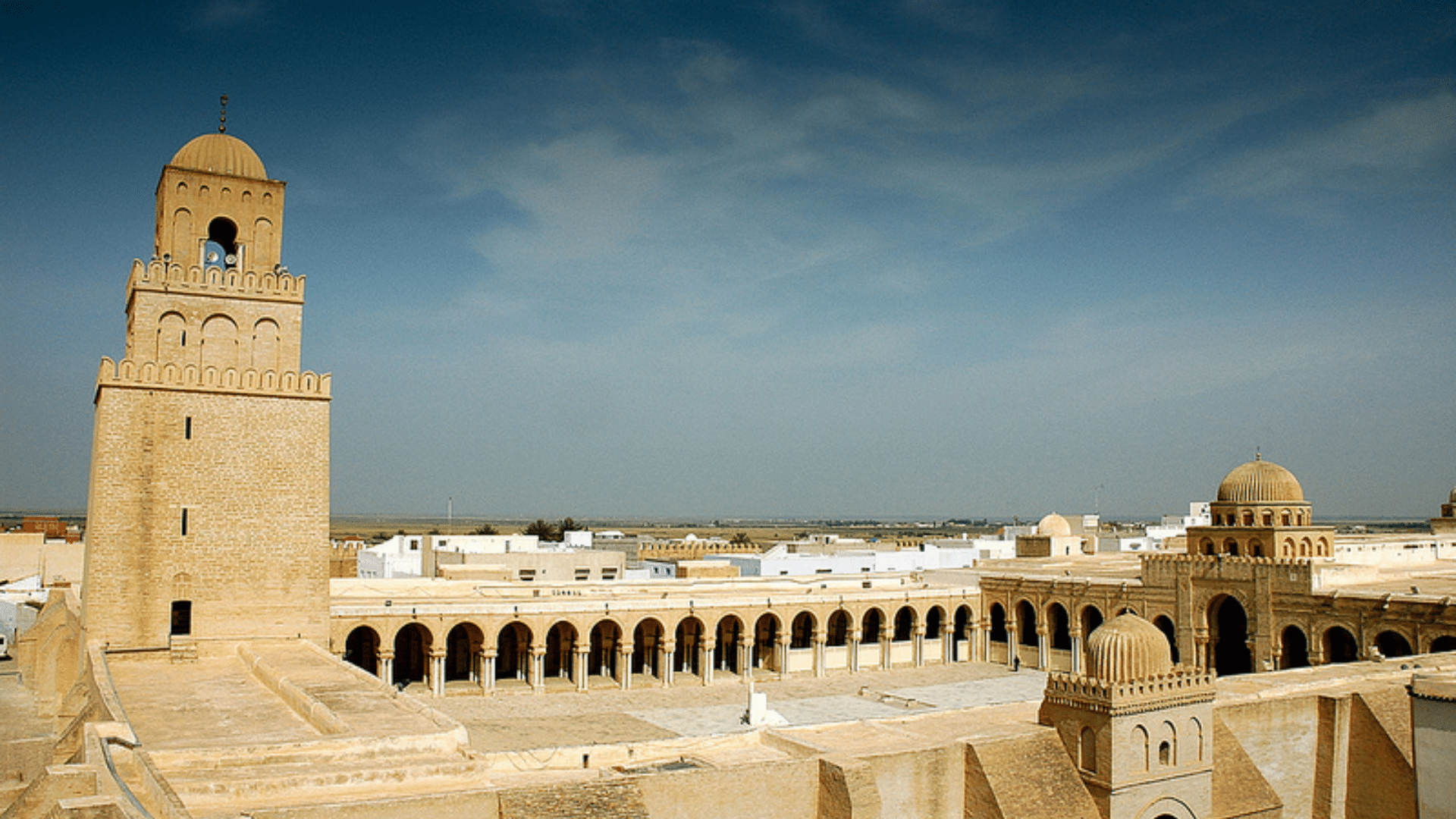
Kairouan, founded in 670 AD, is considered the fourth-holiest city in Islam after Mecca, Medina, and Jerusalem.
It’s home to the Great Mosque of Kairouan, which is one of the oldest and most important Islamic sites in North Africa.
And, also, its medina, mosques, and madrasas are UNESCO-listed and attract visitors seeking spiritual insight and historical depth.
11. Multilingual Society
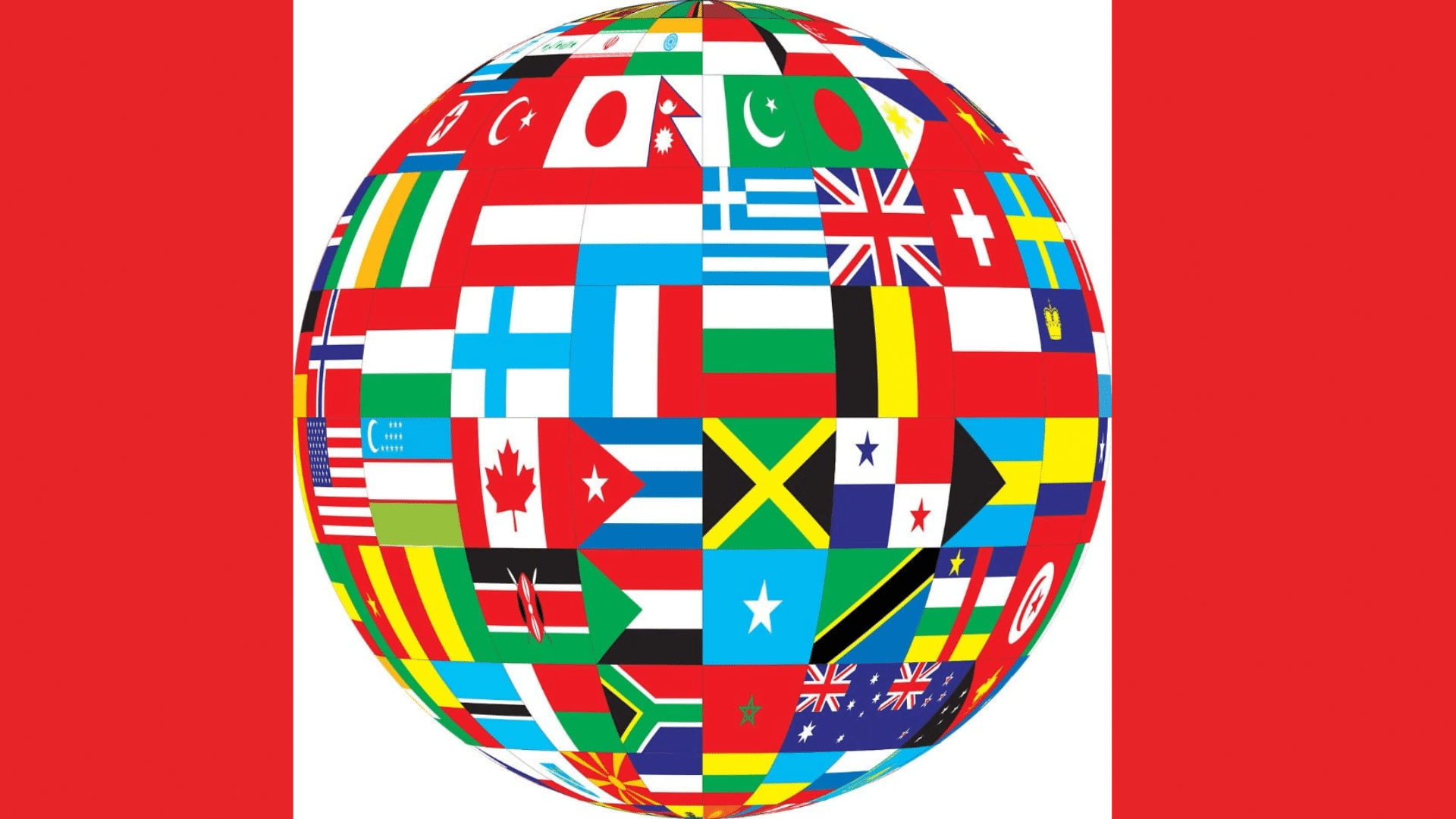
Tunisia is a rich, multilingual society. While Arabic is the official language, French is widely spoken in education, media, and business due to its colonial impact.
In some regions, Berber dialects (Tamazight) are also spoken, especially among indigenous Amazigh communities. Increasingly, English is being taught in schools and used in the tech sector.
12. The Festival of Awussu
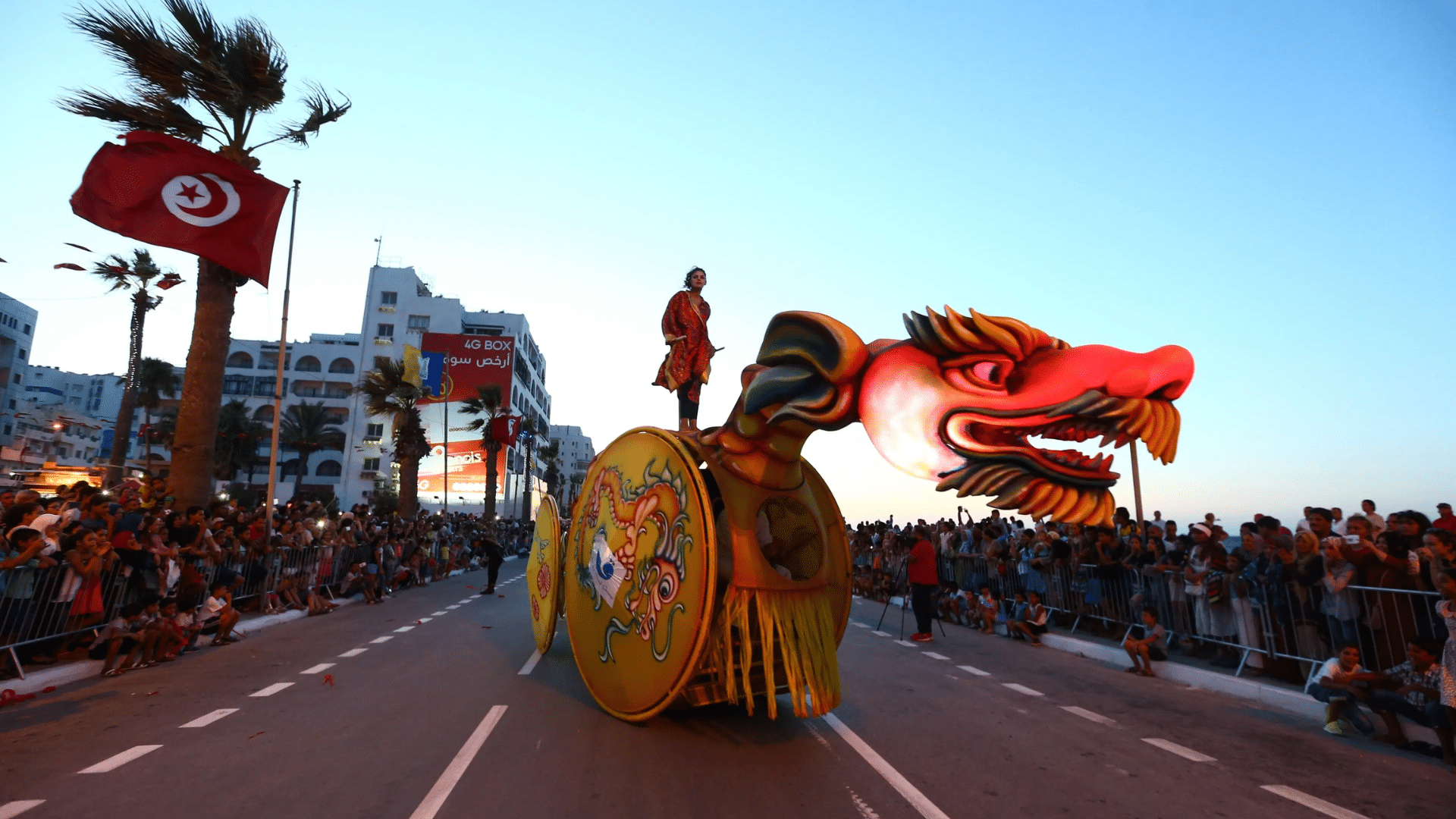
A lively summer celebration in Sousse that blends ancient roots with music, parades, and seaside joy.
- When: July, during peak summer
- Where: Coastal city of Sousse
- Origin: Pagan rituals honoring Neptune (Roman god of the sea)
- Modern Day: An exciting street festival with music, costumes, and parades
- Significance: Celebrates renewal and community spirit by the sea
13. Traditional Pottery of Guellala

Guellala, a village on Djerba Island, is famed for its centuries-old pottery tradition.
Local artisans use red clay from the region to craft amphoras, tagines, and decorative items. The pottery is sun-dried and wood-fired, giving each piece a distinct texture.
Guellala’s pottery stands out for its geometric patterns, symbolic engravings, and durable craftsmanship, blending function with folklore.
14. Mosaics Legacy

Tunisia is home to one of the richest collections of Roman mosaics in the world, thanks to its ancient cities, such as Dougga, Carthage, and El Djem.
These mosaics depict mythological scenes, daily life, and animals, showing Roman art and storytelling.
The Bardo Museum in Tunis holds thousands of exquisite mosaic pieces, preserving Tunisia’s artistic legacy.
15. Blue Doors and Ironwork

Tunisian doorways blend bold color with detailed ironwork, turning simple entrances into cultural and artistic landmarks.
- Found especially in Sidi Bou Said
- Painted in deep turquoise or cobalt shades
- Decorated with intricate black wrought-iron designs
- Symbols include stars, fish, crescents, and flowers
- Represents protection, identity, and artistic heritage
- A favorite subject for photographers and travelers
16. The Jebba and Traditional Dress
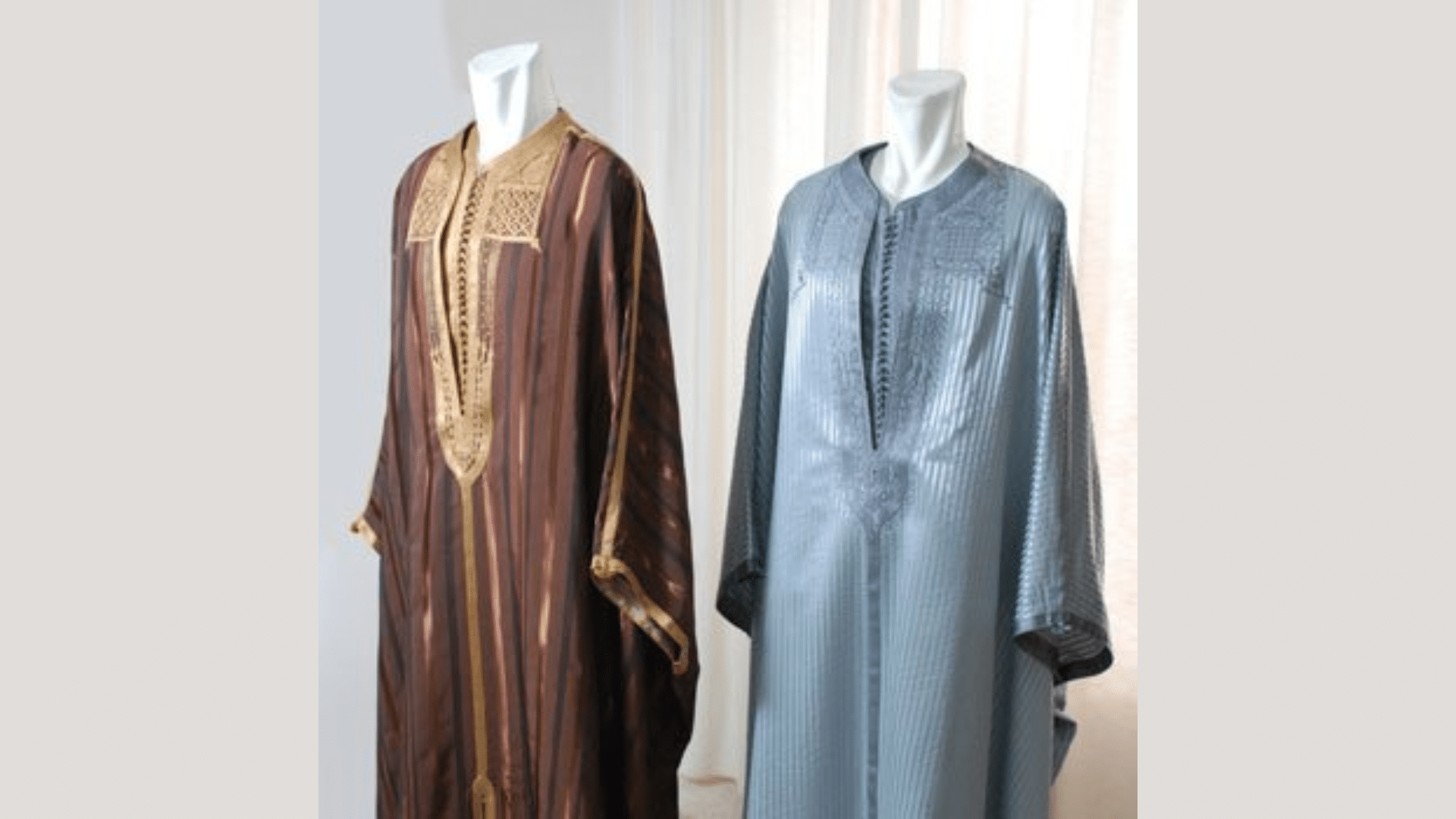
Traditional Tunisian clothing reflects the country’s rich culture and history. Each piece is worn proudly during meaningful and festive occasions.
| Item | Description |
|---|---|
| Jebba | Long tunic worn by Tunisian men, made of fine wool or cotton |
| Farmla | Sleeveless jacket worn over the Jebba, often embroidered |
| Chéchia | Red felt cap, a national headwear symbol |
| Women’s Dress | Includes Sefsari (white wrap), silk belts, and jewelry |
| Occasions | Weddings, religious festivals, and national celebrations |
17. Omek Tannou Rainmaking Ritual
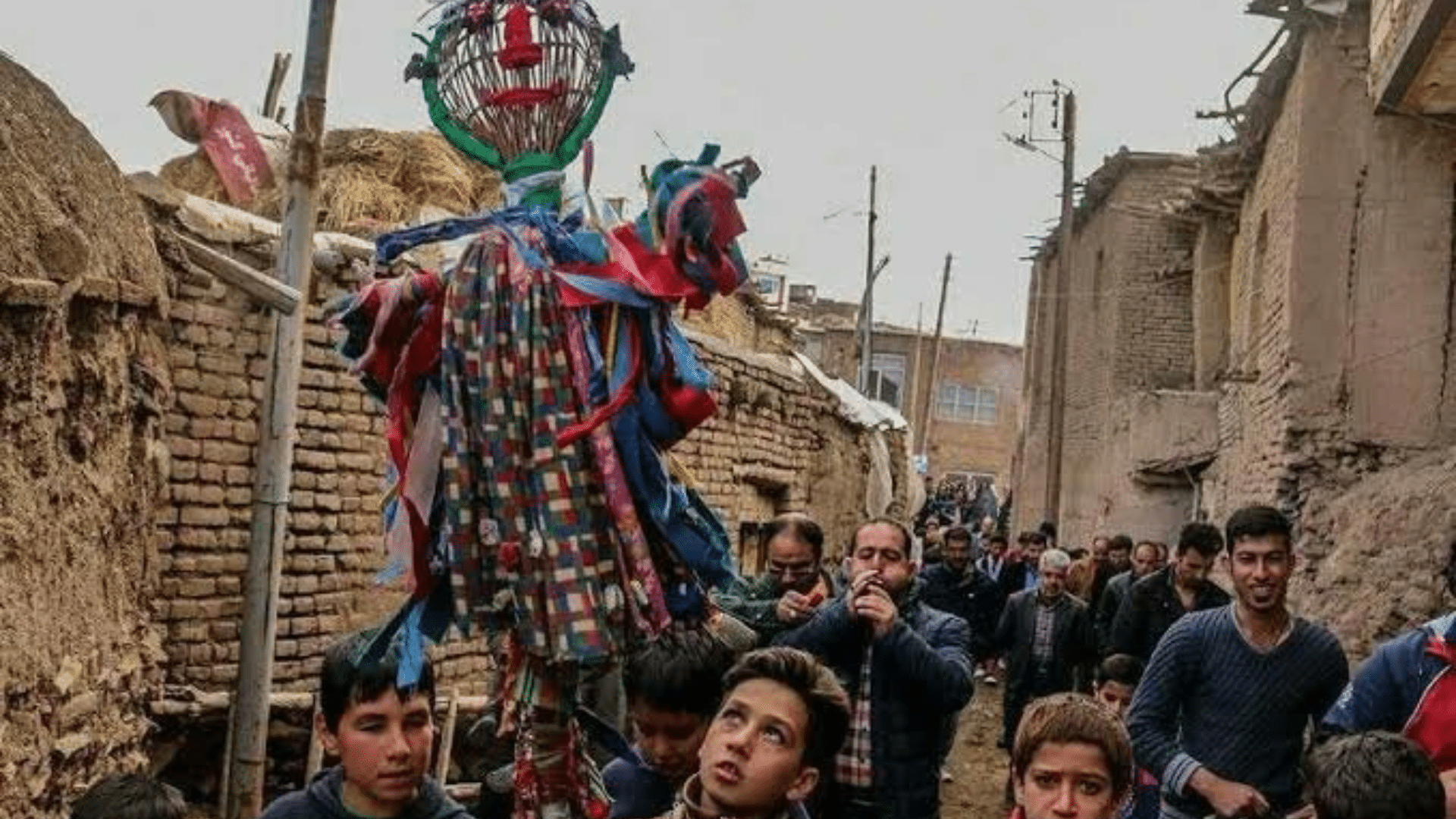
Omek Tannou is an ancient rainmaking ritual that symbolizes hope and heritage. During dry seasons, communities give rise to blessings for rain.
- An ancient folk ritual invoking rain during droughts
- Children carry a wooden doll through villages
- Women sing special chants asking Omek Tannou to bless the land
- Symbolizes hope, agriculture, and cultural heritage
- Practiced mainly in rural and mountain areas
18. Nobel Peace Prize 2015

In 2015, Tunisia’s National Dialogue Quartet won the Nobel Peace Prize for their crucial role in guiding the country toward democracy after the Arab Spring.
The group comprising a labor union, employers’ group, human rights league, and lawyers’ association helped mediate between political factions and prevented civil conflict.
19. Tunisia’s Film Industry and Hollywood Connections

Tunisia’s unique landscapes have caught the attention of filmmakers around the world. Here’s how Tunisia’s film industry has made its mark:
- Star Wars: Tunisia served as the backdrop for the desert planet of Tatooine in the original Star Wars trilogy.
- Other Films: Movies like The English Patient and The Life of Pi have also been filmed in Tunisia.
- Cultural Heritage: The country’s ancient ruins and vast deserts make it a popular location for historical and sci-fi movies.
20. Warm Hospitality
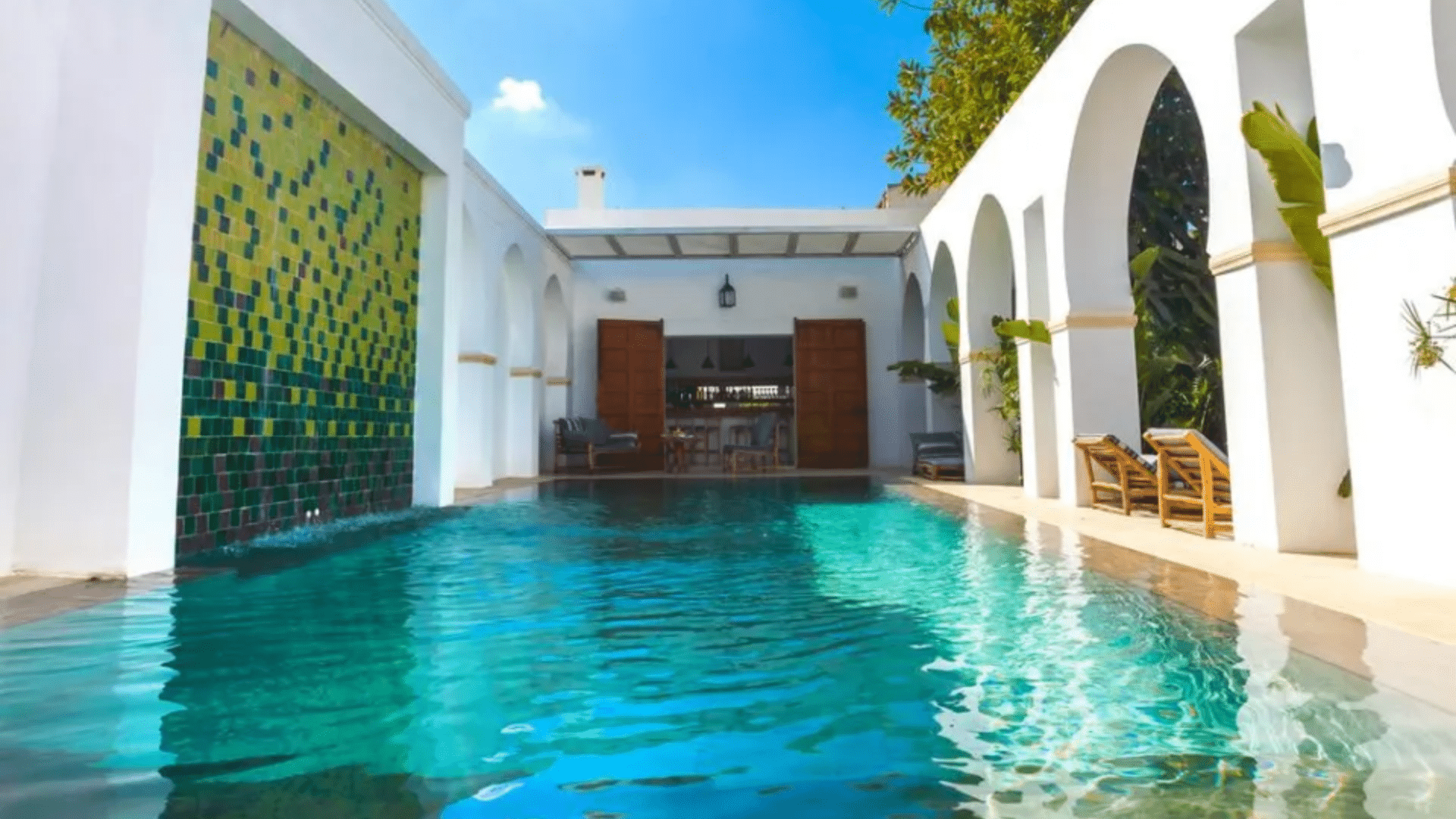
Tunisian homes and towns often welcome guests warmly. Offering tea, food, or a friendly chat is part of everyday life.
Hospitality isn’t just for show, as it’s a deep part of the culture. Whether it’s a shopkeeper sharing a smile or a neighbor bringing over fresh bread, kindness flows naturally.
Visitors often leave with more than souvenirs, and many carry stories of heartfelt interactions and generous gestures that turn strangers into friends.
21. Diverse Cuisine
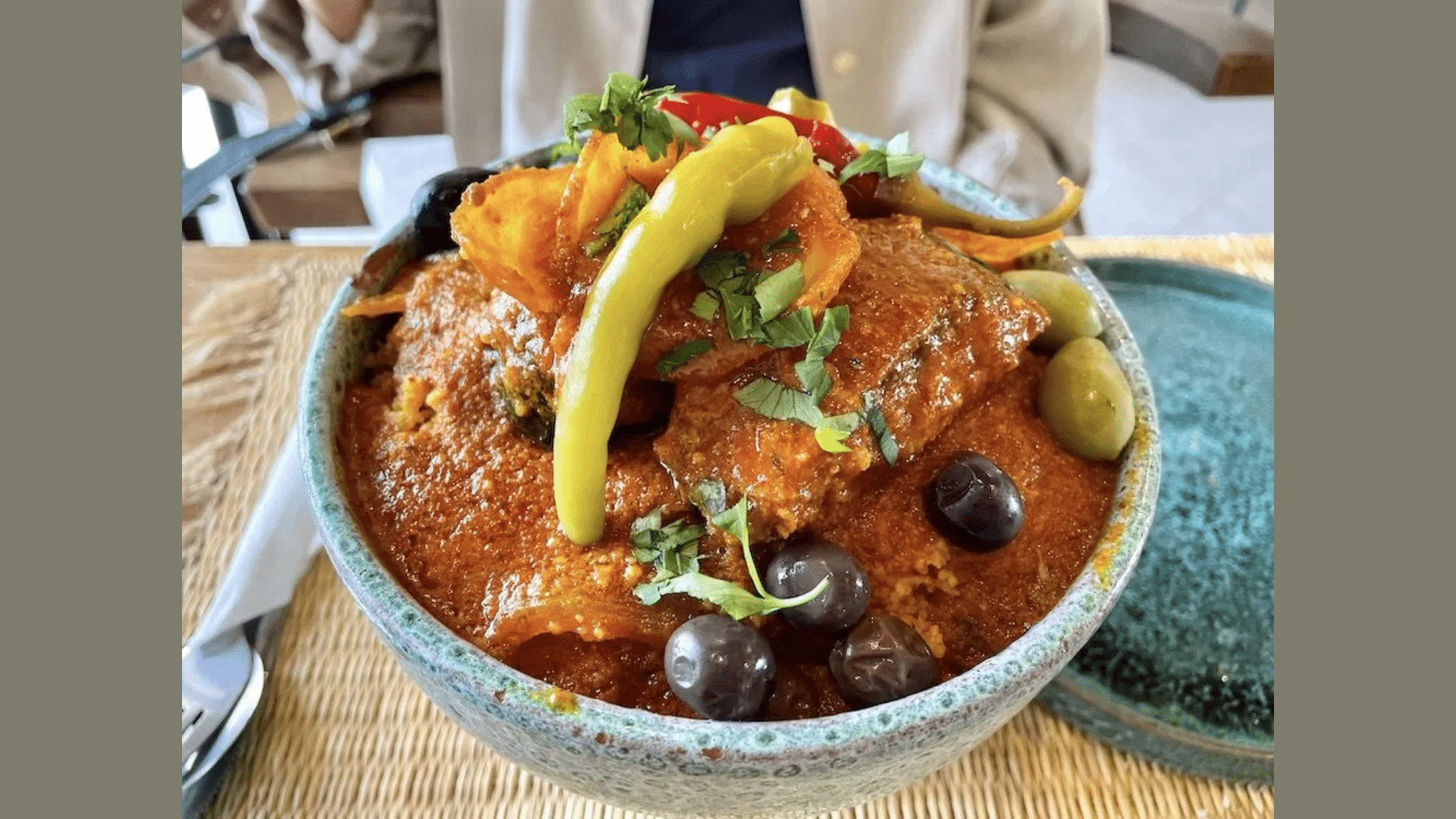
A flavorful mix of spices, grains, and local ingredients makes Tunisian cuisine rich and unforgettable. Below are some of the tasty dishes that Tunisian locals usually prefer.
- Couscous: Steamed semolina with vegetables or meat
- Brik: Crispy pastry with egg and tuna filling
- Harissa: Spicy red pepper paste used in many dishes
- Lablabi: Chickpea soup with garlic and spices
- Makroud: Sweet semolina pastry filled with dates or figs
22. Tunisian Modern Technology
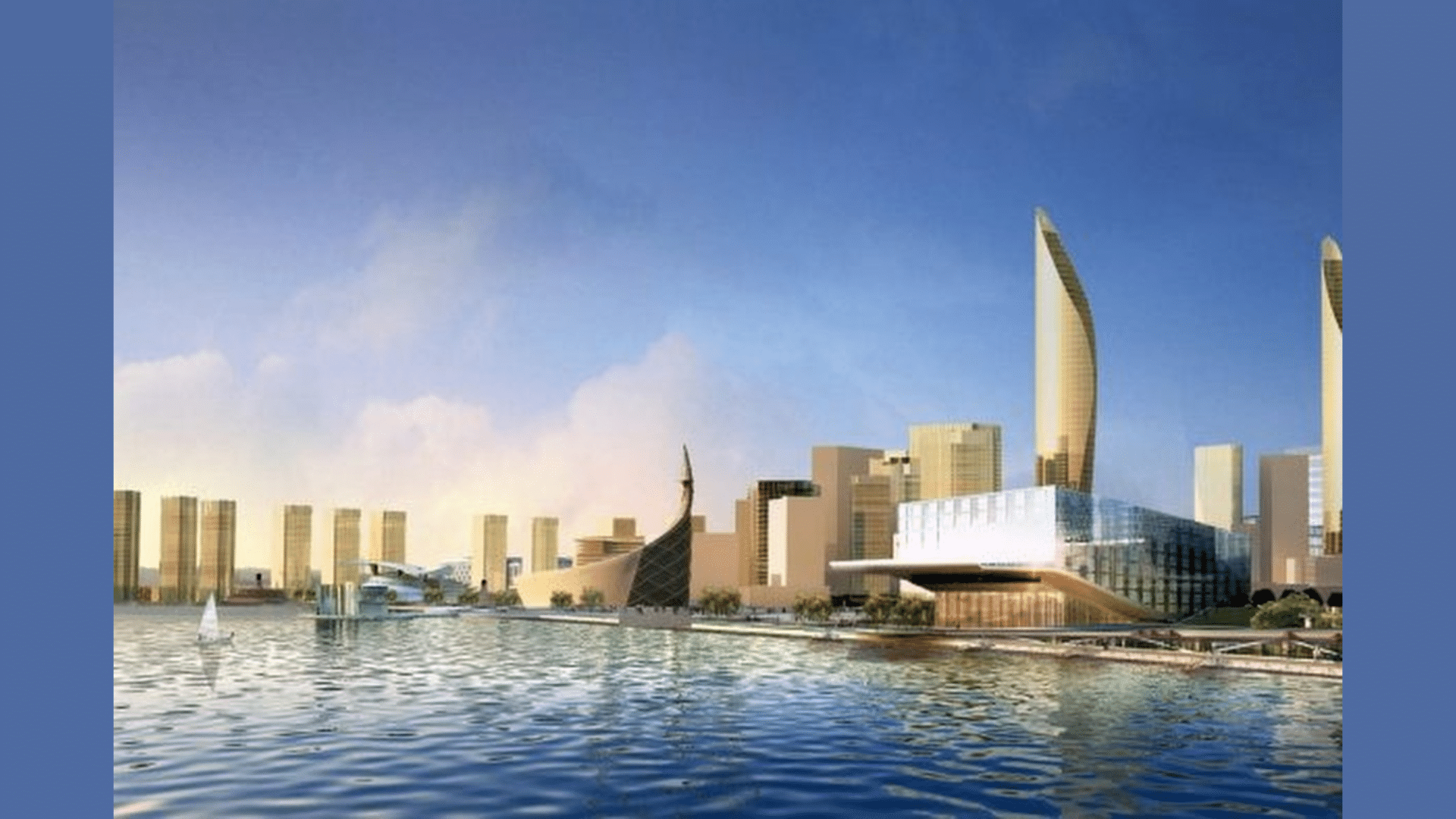
The country is appreciating modern technology across various sectors. It is becoming a hub for tech startups, especially in renewable energy and digital services.
Tunisia has invested in solar power projects, aiming to harness its abundant sunlight.
The rise of mobile banking, e-commerce, and digital education platforms shows how Tunisia is integrating technology into everyday life.
23. Tunisia’s 17 National Parks
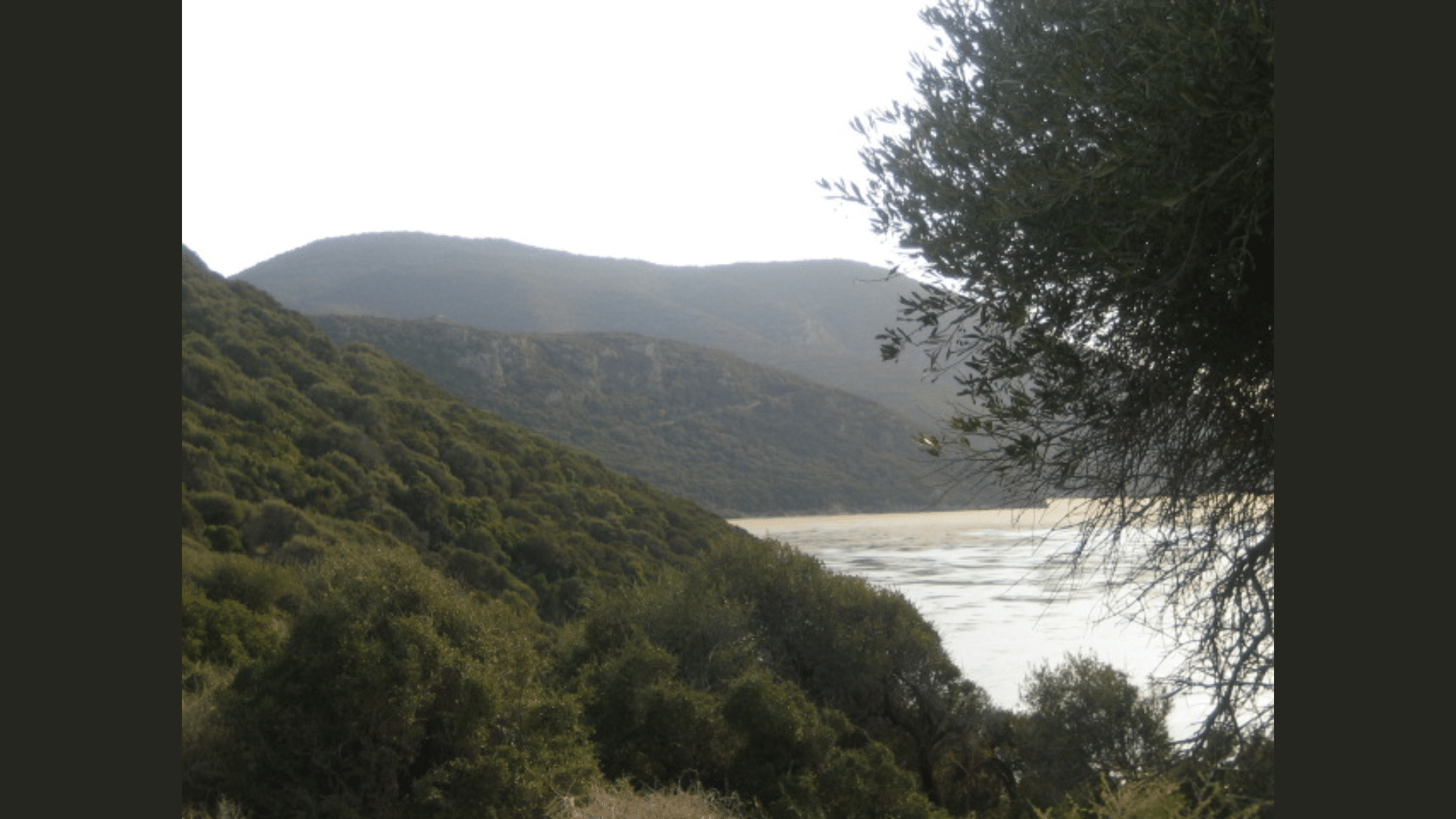
Tunisia has 17 national parks, each protecting special plants, animals, and natural beauty. These four parks offer a glimpse into Tunisia’s natural beauty.
| Park Name | Highlight |
|---|---|
| Boukornine | Forests near the capital |
| Jebel Chitana-Cap Négro | Coastal cliffs and wildlife |
| Jebel Serj | Caves and hiking trails |
| Bou-Hedma | Protected antelope and gazelles |
24. Only Metro in Tunis

Tunis is the only city in Tunisia with a metro system. It’s not underground but runs like a fast tram across the city. The light rail connects key neighborhoods, making it easier to travel without traffic.
With its bright green carriages and regular schedules, the metro plays a big role in keeping Tunisia’s capital moving.
25. Ancient Stone Age Sites
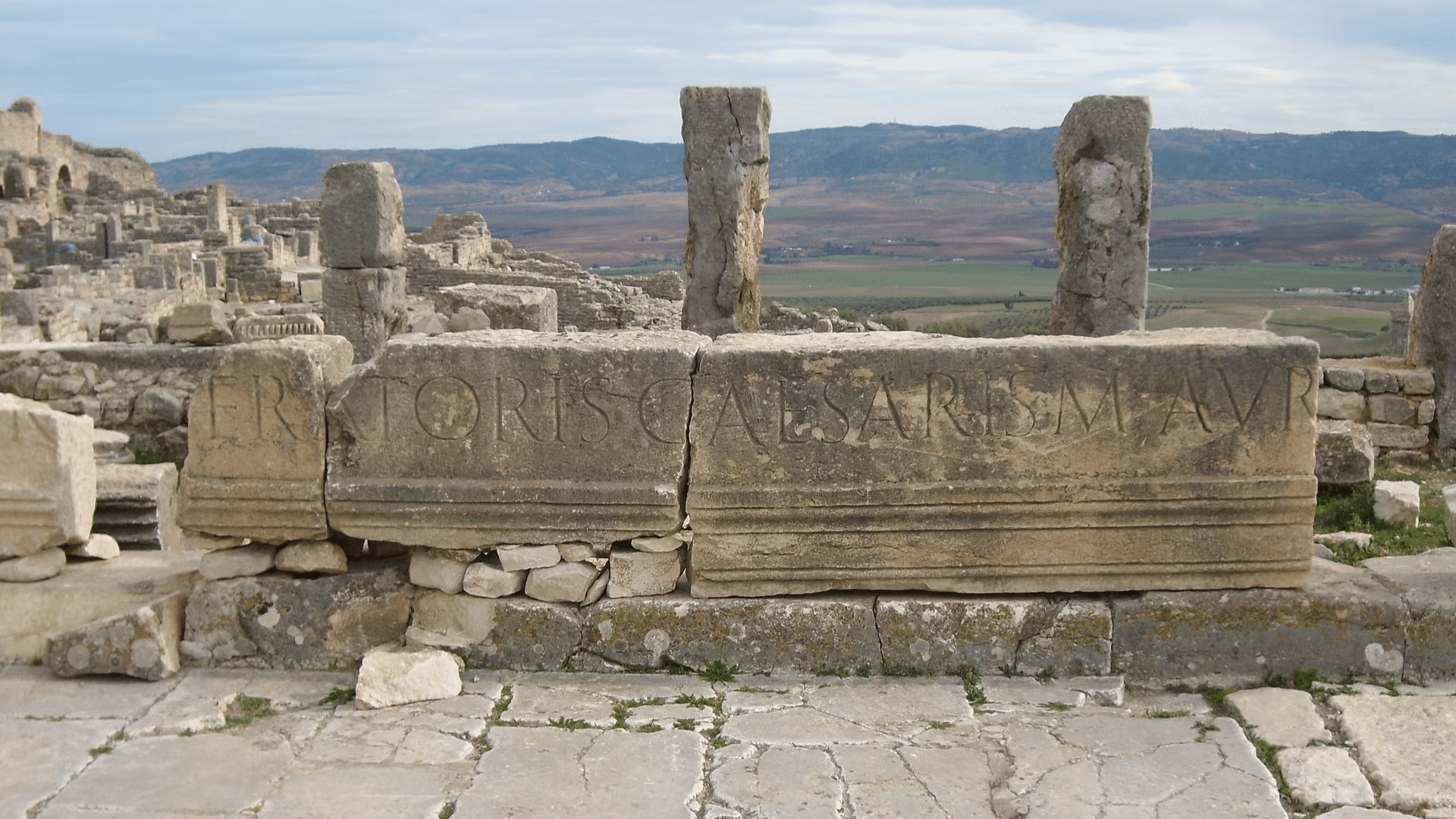
This country holds deep traces of early human life, with ancient tools and cultures buried beneath its soil.
- 700,000+ years ago: First signs of early human activity
- Capsian Culture (10,000 BCE): Stone tools and shell art
- Oued Draa and El Mekta: Rich archaeological sites
- Gafsa Region: Remains of early settlements
26. Mediterranean Coastline

Tunisia’s coastline stretches wide, offering sunny beaches, scenic towns, and a relaxing mix of sea and culture.
- Length: Over 1,300 kilometers
- Beaches: Golden sand and turquoise waters
- Towns: Hammamet, Sousse, Monastir, and more
- Activities: Swimming, sailing, diving, and seafood dining
- Views: Cliffs, harbors, and palm-fringed shorelines
From calm coves to busy ports, the Mediterranean coast shapes both daily rhythms and Tunisia’s inviting charm.
27. The Grand Erg Oriental
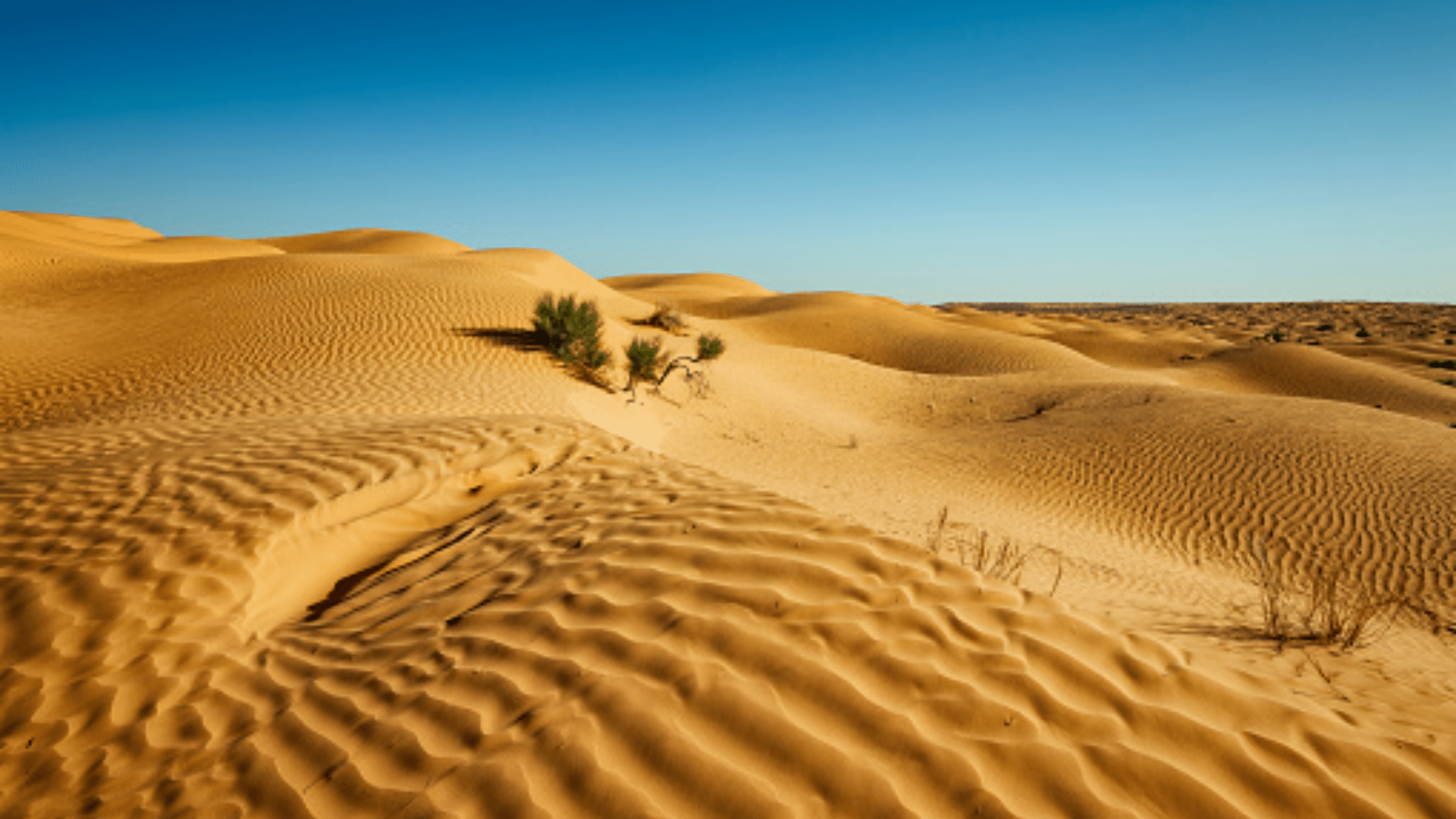
This massive sea of sand stretches across southern Tunisia. It’s part of the Sahara and filled with tall dunes that shift with the wind.
Few plants grow here, but camels, nomadic trails, and desert camps bring it to life.
Sunrises and sunsets paint the sand gold and red. The Grand Erg Oriental isn’t just empty space; it holds stories, silence, and the soft rhythm of desert life.
28. The Malouf Music Tradition

Malouf keeps musical history alive with each note and rhythm.
- Rooted in Andalusian music, brought by Muslim refugees
- Played with violins, ouds, drums, and flutes
- Lyrics are often about love, nature, and faith
- Heard at weddings, festivals, and formal events
- Passed down through generations by master musicians
29. Berber, Arab, and European Heritage
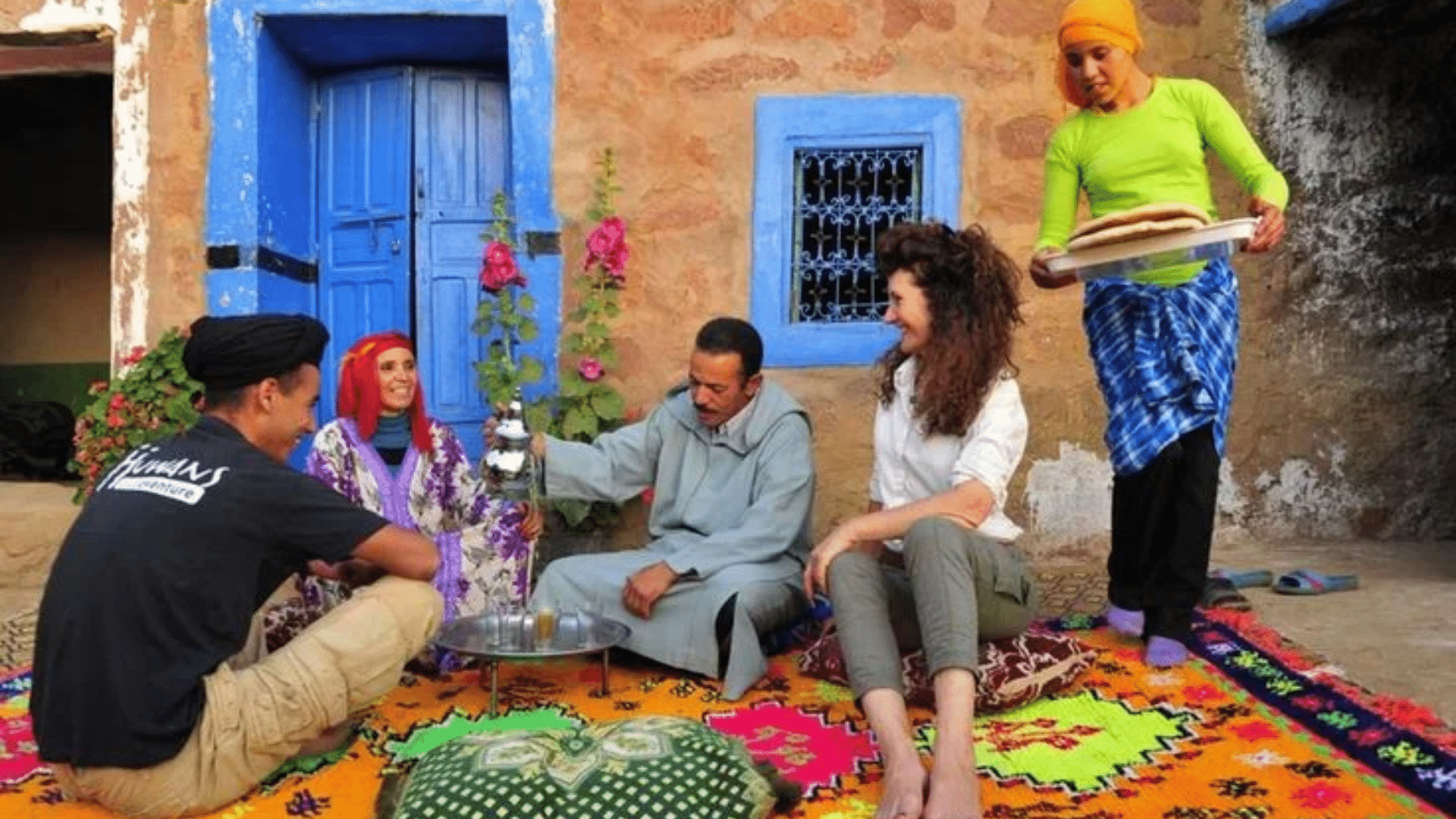
A mix of historical influences shapes Tunisian culture, each leaving a mark on daily life, art, and traditions.
| Culture | Influence Seen In |
|---|---|
| Berber | Language, architecture, and desert crafts |
| Arab | Religion, script, music, and daily customs |
| European | French language, education, and urban design |
Note: Tunisia is full of amazing details—from ancient cities to modern customs. These facts show why it’s not just a country with a past, but one that’s full of life, color, and stories worth knowing.

